Norfloxacin

Norfloxacin structure
|
Common Name | Norfloxacin | ||
|---|---|---|---|---|
| CAS Number | 70458-96-7 | Molecular Weight | 319.331 | |
| Density | 1.3±0.1 g/cm3 | Boiling Point | 555.8±50.0 °C at 760 mmHg | |
| Molecular Formula | C16H18FN3O3 | Melting Point | 220°C | |
| MSDS | Chinese USA | Flash Point | 289.9±30.1 °C | |
Use of NorfloxacinNorfloxacin is a broad-spectrum antibiotic that is active against both Gram-positive and Gram-negative bacteria, which functions by inhibiting DNA gyrase.Target: DNA gyrase; AntibacterialNorfloxacin is a synthetic chemotherapeutic antibacterial agent occasionally used to treat common as well as complicated urinary tract infections. Norfloxacin is a broad-spectrum antibiotic that is active against both Gram-positive and Gram-negative bacteria. It functions by inhibiting DNA gyrase, a type II topoisomerase, and topoisomerase IV, enzymes necessary to separate bacterial DNA, thereby inhibiting cell division.There are currently three approved uses in the adult population (one of which is restricted) and the other ineffective due to bacterial resistance. Chibroxin (ophthalmic) is approved for use in children older than one year of age.Norfloxacin is associated with a number of rare serious adverse reactions as well as spontaneous tendon ruptures and irreversible peripheral neuropathy. Tendon problems may manifest long after therapy had been completed and in severe cases may result in lifelong disabilities. Hepatoxicity resulting in fatalities has also been reported with the use of norfloxacin. |
| Name | norfloxacin |
|---|---|
| Synonym | More Synonyms |
| Description | Norfloxacin is a broad-spectrum antibiotic that is active against both Gram-positive and Gram-negative bacteria, which functions by inhibiting DNA gyrase.Target: DNA gyrase; AntibacterialNorfloxacin is a synthetic chemotherapeutic antibacterial agent occasionally used to treat common as well as complicated urinary tract infections. Norfloxacin is a broad-spectrum antibiotic that is active against both Gram-positive and Gram-negative bacteria. It functions by inhibiting DNA gyrase, a type II topoisomerase, and topoisomerase IV, enzymes necessary to separate bacterial DNA, thereby inhibiting cell division.There are currently three approved uses in the adult population (one of which is restricted) and the other ineffective due to bacterial resistance. Chibroxin (ophthalmic) is approved for use in children older than one year of age.Norfloxacin is associated with a number of rare serious adverse reactions as well as spontaneous tendon ruptures and irreversible peripheral neuropathy. Tendon problems may manifest long after therapy had been completed and in severe cases may result in lifelong disabilities. Hepatoxicity resulting in fatalities has also been reported with the use of norfloxacin. |
|---|---|
| Related Catalog | |
| References |
| Density | 1.3±0.1 g/cm3 |
|---|---|
| Boiling Point | 555.8±50.0 °C at 760 mmHg |
| Melting Point | 220°C |
| Molecular Formula | C16H18FN3O3 |
| Molecular Weight | 319.331 |
| Flash Point | 289.9±30.1 °C |
| Exact Mass | 319.133209 |
| PSA | 74.57000 |
| LogP | 0.82 |
| Vapour Pressure | 0.0±1.6 mmHg at 25°C |
| Index of Refraction | 1.595 |
| InChIKey | OGJPXUAPXNRGGI-UHFFFAOYSA-N |
| SMILES | CCn1cc(C(=O)O)c(=O)c2cc(F)c(N3CCNCC3)cc21 |
|
Section I.Chemical Product and Company Identification Chemical Name Norfloxacin Portland OR Synonym3-Quinolinecarboxylic acid, 1-ethyl-6-fluoro-1,4- dihydro-4-oxo-7-(1-piperazinyl)- (CA INDEX NAME); 1-Ethyl-6-fluoro-1,4-dihydro-4-oxo-7-(1-piperazinyl)- 3-quinolinecarboxylic Acid
Chemical FormulaC16H18FN3O3 CAS Number70458-96-7 Section II.Composition and Information on Ingredients Toxicology Data Chemical NameCAS Number Percent (%)TLV/PEL Min. 98.0 Not available.Rat LD50 (oral) >4 gm/kg Norfloxacin70458-96-7 (HPLC,T)Mouse LD50 (intraperitoneal) 1064 mg/kg Rat LD50 (intravenous) 245 mg/kg Section III. Hazards Identification No specific information is available in our data base regarding the toxic effects of this material for humans. However, Acute Health Effects exposure to any chemical should be kept to a minimum. Skin and eye contact may result in irritation. May be harmful if inhaled or ingested. Always follow safe industrial hygiene practices and wear proper protective equipment when handling this compound. CARCINOGENIC EFFECTS : Not available. Chronic Health Effects MUTAGENIC EFFECTS : Not available. TERATOGENIC EFFECTS : Not available. DEVELOPMENTAL TOXICITY: Reproductive effects. Rat TDLo Oral 1375 mg/kg, female 7-17 days of pregnancy Toxic Effects: Specific Developmental Abnormalities - Musculoskeletal system Effects on Newborn - Behavioral Rabbit Oral 1300 mg/kg, female 6-18 days of pregnancy Toxic Effects: Effects on Fertility - Litter size Effects on Embryo or Fetus - Fetotoxicity Effects on Embryo or Fetus - Fetal death Rabbit Oral 1625 mg/kg, female 13 days prior to mating Toxic Effects: Maternal Effects - Ovaries, fallopian tubes Maternal Effects - Uterus, cervix, vagina Repeated or prolonged exposure to this compound is not known to aggravate existing medical conditions. Section IV.First Aid Measures Eye ContactCheck for and remove any contact lenses. In case of contact, immediately flush eyes with plenty of water for at least 15 minutes. Get medical attention. Skin ContactIn case of contact, immediately flush skin with plenty of water. Remove contaminated clothing and shoes. Wash clothing before reuse. Thoroughly clean shoes before reuse. Get medical attention. InhalationIf the victim is not breathing, perform mouth-to-mouth resuscitation. Loosen tight clothing such as a collar, tie, belt or waistband. If breathing is difficult, oxygen can be administered. Seek medical attention if respiration problems do not improve. INDUCE VOMITING by sticking finger in throat. Lower the head so that the vomit will not reenter the mouth and throat. Ingestion Loosen tight clothing such as a collar, tie, belt or waistband. If the victim is not breathing, perform mouth-to-mouth resuscitation. Examine the lips and mouth to ascertain whether the tissues are damaged, a possible indication that the toxic material was ingested; the absence of such signs, however, is not conclusive. Continued on Next Page Norfloxacin Section V.Fire and Explosion Data Not available. FlammabilityMay be combustible at high temperature.Auto-Ignition Flammable LimitsNot available. Flash PointsNot available. Combustion ProductsThese products are toxic carbon oxides (CO, CO2), nitrogen oxides (NO, NO2), halogenated compounds. WARNING: Highly toxic HF gas is produced during combustion. Fire HazardsNot available. Risks of explosion of the product in presence of mechanical impact: Not available. Explosion Hazards Risks of explosion of the product in presence of static discharge: Not available. Fire Fighting Media SMALL FIRE: Use DRY chemical powder. LARGE FIRE: Use water spray, fog or foam. DO NOT use water jet. and Instructions Consult with local fire authorities before attempting large scale fire-fighting operations. Section VI.Accidental Release Measures Spill CleanupHygroscopic material. Use a shovel to put the material into a convenient waste disposal container. Finish cleaning the spill by rinsing any Instructions contaminated surfaces with copious amounts of water. Consult federal, state, and/or local authorities for assistance on disposal. Section VII. Handling and Storage HYGROSCOPIC. Keep away from heat. Mechanical exhaust required. When not in use, tightly seal the container and store Handling and Storage in a dry, cool place. Avoid excessive heat and light. Do not breathe dust. Information Always store away from incompatible compounds such as oxidizing agents, moisture. Section VIII. Exposure Controls/Personal Protection Engineering ControlsUse process enclosures, local exhaust ventilation, or other engineering controls to keep airborne levels below recommended exposure limits. If user operations generate dust, fume or mist, use ventilation to keep exposure to airborne contaminants below the exposure limit. Personal ProtectionSplash goggles. Lab coat. Dust respirator. Boots. Gloves. Suggested protective clothing might not be sufficient; consult a specialist BEFORE handling this product. Be sure to use a MSHA/NIOSH approved respirator or equivalent. Not available. Exposure Limits Section IX. Physical and Chemical Properties Physical state @ 20°CSolid. (Very pale yellow ~ pale yellow,SolubilitySolubility at 25°C (mg/ml): water 0.28; crystal ~ powder.) methanol 0.98; ethanol 1.9; acetone 5.1; chloroform 5.5; diethyl ether 0.1; benzene Not available. Specific Gravity 0.15; ethyl acetate 0.94; octyl alcohol 5.1; glacial acetic acid 340. Solubility in water is pH dependent, increasing sharply at pH <5 or at pH >10. Molecular Weight319.33Partition CoefficientLOG Pow: 0.46 Boiling PointNot available.Not applicable. Vapor Pressure Melting Point221°C (429.8°F)Vapor DensityNot available. Not available.Not available. Refractive IndexVolatility Critical TemperatureNot available.OdorNot available. Not available.Not available. ViscosityTaste Section X.Stability and Reactivity Data This material is stable if stored under proper conditions. (See Section VII for instructions) Stability Conditions of InstabilityAvoid excessive heat and light. Hygroscopic; keep container tightly closed. IncompatibilitiesReactive with oxidizing agents, moisture. Continued on Next Page Norfloxacin Section XI. Toxicological Information RTECS NumberVB2005000 Eye Contact. Ingestion. Inhalation. Routes of Exposure Toxicity DataRat LD50 (oral) >4 gm/kg Mouse LD50 (intraperitoneal) 1064 mg/kg Rat LD50 (intravenous) 245 mg/kg Chronic Toxic EffectsCARCINOGENIC EFFECTS : Not available. MUTAGENIC EFFECTS : Not available. TERATOGENIC EFFECTS : Not available. DEVELOPMENTAL TOXICITY: Reproductive effects. Rat TDLo Oral 1375 mg/kg, female 7-17 days of pregnancy Toxic Effects: Specific Developmental Abnormalities - Musculoskeletal system Effects on Newborn - Behavioral Rabbit Oral 1300 mg/kg, female 6-18 days of pregnancy Toxic Effects: Effects on Fertility - Litter size Effects on Embryo or Fetus - Fetotoxicity Effects on Embryo or Fetus - Fetal death Rabbit Oral 1625 mg/kg, female 13 days prior to mating Toxic Effects: Maternal Effects - Ovaries, fallopian tubes Maternal Effects - Uterus, cervix, vagina Repeated or prolonged exposure to this compound is not known to aggravate existing medical conditions. Acute Toxic EffectsNo specific information is available in our data base regarding the toxic effects of this material for humans. However, exposure to any chemical should be kept to a minimum. Skin and eye contact may result in irritation. May be harmful if inhaled or ingested. Always follow safe industrial hygiene practices and wear proper protective equipment when handling this compound. Section XII.Ecological Information Not available. Ecotoxicity Not available. Environmental Fate Section XIII. Disposal Considerations Waste DisposalRecycle to process, if possible. Consult your local regional authorities. You may be able to dissolve or mix material with a combustible solvent and burn in a chemical incinerator equipped with an afterburner and scrubber system. Observe all federal, state and local regulations when disposing of the substance. Section XIV. Transport Information DOT ClassificationNot a DOT controlled material (United States). PIN NumberNot applicable. Proper Shipping NameNot applicable. Packing Group (PG)Not applicable. DOT Pictograms Section XV. Other Regulatory Information and Pictograms TSCA Chemical InventoryThis product is NOT on the EPA Toxic Substances Control Act (TSCA) inventory. The following notices are required by 40 CFR 720.36 (C) for those products not on the inventory list: (EPA) (i) These products are supplied solely for use in research and development by or under the supervision of a technically qualified individual as defined in 40 CFR 720.0 et sec. (ii) The health risks of these products have not been fully determined. Any information that is or becomes available will be supplied on an MSDS sheet. WHMIS ClassificationOn DSL. (Canada) EINECS Number (EEC) 274-614-4 EEC Risk StatementsNot available. Japanese Regulatory Data Not available. Continued on Next Page SECTION 16 - ADDITIONAL INFORMATION N/A |
CHEMICAL IDENTIFICATION
HEALTH HAZARD DATAACUTE TOXICITY DATA
MUTATION DATA
|
| Personal Protective Equipment | Eyeshields;Gloves;type N95 (US);type P1 (EN143) respirator filter |
|---|---|
| Hazard Codes | Xn: Harmful; |
| Risk Phrases | R20/21/22 |
| Safety Phrases | 26-37/39 |
| RIDADR | NONH for all modes of transport |
| WGK Germany | 2 |
| RTECS | VB2005000 |
| HS Code | 2933990090 |
| Precursor 8 | |
|---|---|
| DownStream 10 | |
| HS Code | 2933990090 |
|---|---|
| Summary | 2933990090. heterocyclic compounds with nitrogen hetero-atom(s) only. VAT:17.0%. Tax rebate rate:13.0%. . MFN tariff:6.5%. General tariff:20.0% |
|
Phenotypic heterogeneity enables uropathogenic Escherichia coli to evade killing by antibiotics and serum complement.
Infect. Immun. 83(3) , 1056-67, (2015) Uropathogenic strains of Escherichia coli (UPEC) are the major cause of bacteremic urinary tract infections. Survival in the bloodstream is associated with different mechanisms that help to resist ser... |
|
|
Genotypes and oxacillin resistance of Staphylococcus aureus from chicken and chicken meat in Poland.
Poult. Sci. 93(12) , 3179-86, (2014) The genotypes and oxacillin resistance of 263 Staphylococcus aureus isolates cultured from chicken cloacae (n = 138) and chicken meat (n = 125) was analyzed. Fifteen spa types were determined in the s... |
|
|
Efflux-related resistance to norfloxacin, dyes, and biocides in bloodstream isolates of Staphylococcus aureus.
Antimicrob. Agents Chemother. 51 , 3235-9, (2007) Efflux is an important resistance mechanism in Staphylococcus aureus, but its frequency in patients with bacteremia is unknown. Nonreplicate bloodstream isolates were collected over an 8-month period,... |
| Zomxin |
| 1-Ethyl-6-fluoro-4-oxo-7-(1-piperazinyl)-1,4-dihydro-3-quinolinecarboxylic acid |
| Fulgram |
| Barazan |
| NORFLOXACINE |
| CHIBROXIN |
| Noflo |
| Utinor |
| EINECS 274-614-4 |
| Nolicin |
| Sebercim |
| Chibroxol |
| Zoroxin |
| 4803P |
| 3-Quinolinecarboxylic acid, 1-ethyl-6-fluoro-1,4-dihydro-4-oxo-7-(1-piperazinyl)- |
| am-715 |
| MFCD08060466 |
| 1-ethyl-6-fluoro-4-oxo-7-piperazinyl-1,4-dihydro-quinoline-3-carboxylic acid |
| Norfloxacin |
| 1-ethyl-6-fluoro-4-oxo-7-piperazin-1-yl-1,4-dihydroquinoline-3-carboxylic acid |
| Floxacin |
| 1-ethyl-6-fluoro-7-piperazino-4-oxo-1,4-dihydro-quinoline-3-carboxylic acid |
| Noroxin |
| Lexinor |
| 1-ethyl-6-fluoro-4-oxo-7-(piperazin-1-yl)-1,4-dihydroquinoline-3-carboxylic acid |
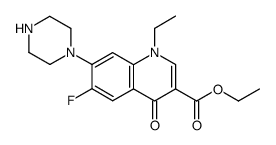 CAS#:74011-47-5
CAS#:74011-47-5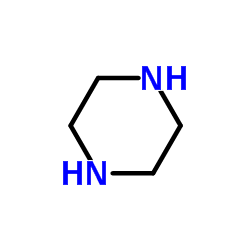 CAS#:110-85-0
CAS#:110-85-0 CAS#:68077-26-9
CAS#:68077-26-9 CAS#:7440-44-0
CAS#:7440-44-0![1-Ethyl-6-fluoro-1,4-dihydro-7-[4-[(ethoxycarbonyl)methyl]-1-piperazinyl]-4-oxoquinoline-3-carboxylic Acid Structure](https://image.chemsrc.com/caspic/182/118476-20-3.png) CAS#:118476-20-3
CAS#:118476-20-3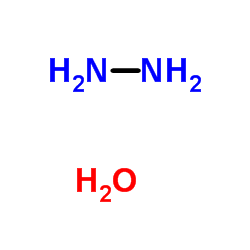 CAS#:7803-57-8
CAS#:7803-57-8![1-ethyl-6-fluoro-1,4-dihydro-7-[4-(1-methyl-2-oxopropyl)-1-piperazinyl]-4-oxoquinoline-3-carboxylic acid Structure](https://image.chemsrc.com/caspic/073/103258-03-3.png) CAS#:103258-03-3
CAS#:103258-03-3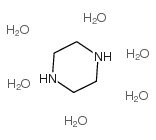 CAS#:142-63-2
CAS#:142-63-2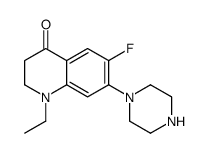 CAS#:110719-50-1
CAS#:110719-50-1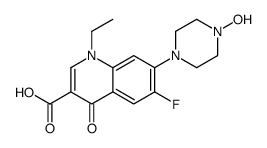 CAS#:109142-49-6
CAS#:109142-49-6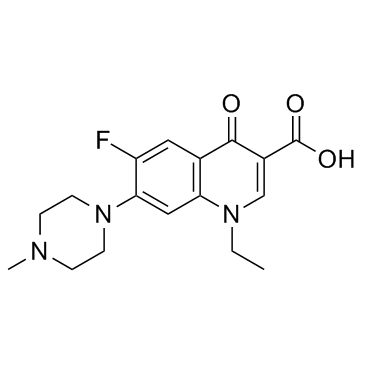 CAS#:70458-92-3
CAS#:70458-92-3 CAS#:100587-52-8
CAS#:100587-52-8![1-ethyl-6-fluoro-4-oxo-7-[4-(2-oxopropyl)piperazin-1-yl]quinoline-3-carboxylic acid structure](https://image.chemsrc.com/caspic/182/103175-73-1.png) CAS#:103175-73-1
CAS#:103175-73-1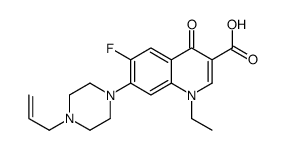 CAS#:70458-97-8
CAS#:70458-97-8 CAS#:74011-56-6
CAS#:74011-56-6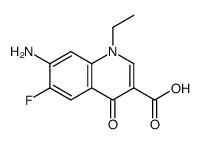 CAS#:75001-63-7
CAS#:75001-63-7![norfloxacin ep impurity b norfloxacin ethylenediamine analog 7-[(2-aminoethyl)amino]-1-ethyl-6-fluoro-4-oxo-1,4-dihydroquinoline-3-carboxylic acid hcl structure](https://image.chemsrc.com/caspic/124/75001-77-3.png) CAS#:75001-77-3
CAS#:75001-77-3![1-ethyl-6-fluoro-7-[4-[(5-methyl-2-oxo-1,3-dioxol-4-yl)methyl]piperazin-1-yl]-4-oxoquinoline-3-carboxylic acid structure](https://image.chemsrc.com/caspic/133/85195-76-2.png) CAS#:85195-76-2
CAS#:85195-76-2
